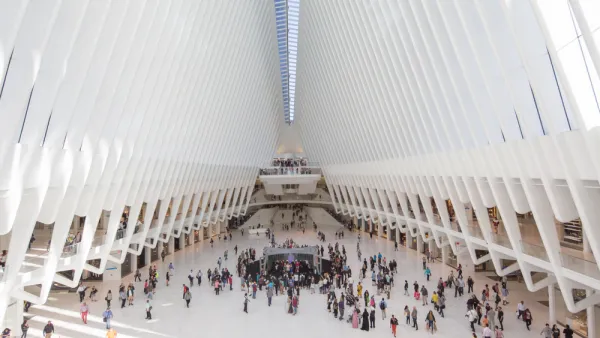This annual architecture and design award has been kicking for ten years now, and 2019 provides the perfect opportunity to review the decade that was the 2010s.

Alexandra Lange and Mark Lamster put a twist on their traditional year in review for architecture—this time revisiting past awards to gather a super list for the decade of the 2010s.
According to the decade-in-review post, it's been a decade since the duo came up with the idea for an architecture awards program that strived to go beyond the boring, over-serious traditions of architecture awards. Over the years, the year-in-review post has been a favorite for Planetizen's newsfeed, showing up on these pages in 2013, 2014, 2016, 2017, and 2018.
Here's how Lange and Lamster explain their culling of the numerous annual lists into a new list for the decade that was the 2010s.
Below, we revisit our past prizes, pairing our initial write-ups with new commentary that reflects on the original award and how, if at all, our views have changed. These are the highlights of the last 10 sodden years, the ups and downs (mostly downs) as our culture and politics shriveled into a polarized narcissistic frenzy headed for climatic destruction. Enjoy!
FULL STORY: The decade in architecture: The good, the bad, and the capitalism

National Parks Layoffs Will Cause Communities to Lose Billions
Thousands of essential park workers were laid off this week, just before the busy spring break season.

Retro-silient?: America’s First “Eco-burb,” The Woodlands Turns 50
A master-planned community north of Houston offers lessons on green infrastructure and resilient design, but falls short of its founder’s lofty affordability and walkability goals.

Delivering for America Plan Will Downgrade Mail Service in at Least 49.5 Percent of Zip Codes
Republican and Democrat lawmakers criticize the plan for its disproportionate negative impact on rural communities.

Test News Post 1
This is a summary

Test News Headline 46
Test for the image on the front page.

Balancing Bombs and Butterflies: How the National Guard Protects a Rare Species
The National Guard at Fort Indiantown Gap uses GIS technology and land management strategies to balance military training with conservation efforts, ensuring the survival of the rare eastern regal fritillary butterfly.
Urban Design for Planners 1: Software Tools
This six-course series explores essential urban design concepts using open source software and equips planners with the tools they need to participate fully in the urban design process.
Planning for Universal Design
Learn the tools for implementing Universal Design in planning regulations.
EMC Planning Group, Inc.
Planetizen
Planetizen
Mpact (formerly Rail~Volution)
Great Falls Development Authority, Inc.
HUDs Office of Policy Development and Research
NYU Wagner Graduate School of Public Service





























